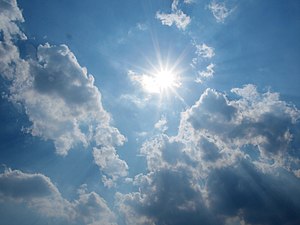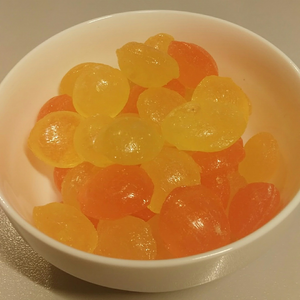Cult of the Sun
The Cult of the Sun is a Badist sect which reveres the sun as the greatest, most powerful and most direct manifestation of all the elemental spirits in the world; the sun is thought to be a manifestation of heat and light combined, and some argue from this that the plant element is in fact non-primary owing to its need for the sun. It is based in eastern Dezevau, historically especially the northeastern and southeastern reaches, but today the centre of the group being Vadidodhe. It is known for being, among the Badist sects, unusually zealous, in the past to the point of violence.
History
The Cult of the Sun's beginnings are unclear, but it is generally recognised that it is among the oldest sects; it has been suggested that it was originated as a sun animism before the advent of Badist elemental theory, or that it was seen to represent an element in its whole by itself at that time. However, its activity was generally sparse until around the turn of the first millennium CE.
Solar Madness events were the most visible aspect of Sun Cultism, but in many areas, particularly in the cities, they established temples which tended to have considerable popularity and longevity, dedicated dually to light and heat. They were known to perform some cremations, as well as being invoked in regards to the weather. Sun temples, however, characteristically did not bring in much money compared to other temples, nor did they spend much; they also tended to conduct fewer scholarly activities.
The Cult of the Sun was banned in some places, as it was perceived as a threat to the authorities and to public health; Solar Madness is sometimes thought to have been an infectious culture-bound syndrome. In these places, underground networks usually existed. During the era of Euclean colonisation, its practices were held by some to be representative of Badi generally and were considered barbarous and seditious; it was banned under both Gaullican and Estmerish rule. Notably, in 1774, Sun Cultists organised and prosecuted the Saint-Bermude Solar Revolt against Gaullican rule, which was ultimately unsuccessful. Typically, however, Sun Cultist actions were disorganised and largely without political programme (though there was a trend towards redistribution of wealth and populism generally), and easily put down.
There were no further instances of Solar Madness from independence onward, on the city-wide or larger scale as had been seen in earlier times. The independent Republic of Dezevau repealed the ban on the cult, whose members came into the open. The centre of Sun Cultist activity became Vadidodhe, possibly because of its position as a transport hub, though every major city in Dezevau today has some sort of Sun Cultist presence. Most Sun Cultist establishments are now registered with the Association of Badist Churches, though they were slow to do so historically, while there is no formal organisation for the Cult of the Sun otherwise.
Solar Madness

Repeated instances of mass "Solar Madness" outbreaks were associated with the cult throughout history. Notable instances include the Noavanau Solar Madness in 1224, the Naimhejia Solar Madness in 1587, and the Saint-Bermude Solar Revolt in 1774. While it is not entirely clear in the historical record whether Cultists of the Sun actually had such practices, they were said to most visibly run through the streets, raving, ranting, chanting, screaming and singing, frequently devotional music, the name of the sun and committing inexplicable acts which would result in injury to themselves or bystanders. The Great Fire of Noagiabegia was ascribed to the Cult of the Sun at the time, though later scholarship suggests this was not true.
It has been theorised that Solar Madness was a culture-bound syndrome, a meme, an infectious disease, catharsis or a mass psychogenic illness. Its behaviours very much went against the politeness of normal Dezevauni culture, in a nominally rebellious way but in fact typically achieving little lasting change, and in fact strengthening the prevailing order by allowing popular direct action to correctively remove its most hated elements. Even at the time, it was considered in some sense to be infectious even if not in a conventional sense; there are instances of cities closing their gates in quarantine against those with Solar Madness. Those who themselves had been afflicted by it often spoke of having been given over to it, but recovering with everyone else. Some theorists identify Solar Madness with heatstroke.
A practice which was most common during Solar Madness was staring at the sun until one's eyes were damaged, which would often visibly change their colour or cause blindness. This was never very common, even during Solar Madness events, but those who had gone blind from staring at the sun were held in some regard as holy people, at least in some areas at some points in history; they were said to be sunstruck.
Practice
In accordance with reverence for the sun as avatar of heat and light, rituals are conducted to praise, honour and sacrifice to it. These include burning of offerings, composition and recital of devotional music and literature, art, and some superstitious habits. Processions are also conducted, this being a more modern practice, with bright costumes, music and noise. It is common to keep eternal flames at sun temples.
Similar to other Badist sects, Sun Cultist temples keep detailed and obscure lore. Compared to those of temples dedicated to other elements, Sun Cultist scripts tend to be fewer in number and shorter, as well as less well documented, and more illiteral or difficult to comprehend for the layperson.
Also similar to other Badist sects, those of the Cult of the Sun usually attend regular meetings, where religious study, community service and formal rites are conducted. In a seven day week, it is usual for Sun Cultists to meet on Sunday.
Ceremony
Typical colours for the Cult of the Sun's devotional material are yellow, and redder colours to a lesser extent; reflective, bright, yellow materials are favoured, such as amber, bronze, honey and stained glass. Light and heat also play a large role; it was common to keep braziers and candles, and in the modern day, heaters and bright lights, though many temples have eschewed these or reduced their usage in the interests of environmentalism or the comfort of the attendees. The use of gold is less common, as it is more associated with the element of metal.
Sun Cultist buildings are characteristically round and built of light-coloured stone, with exposure to sunlight often maximised through the use of mirrors and windows. They are among the most innovative in the use of light in architecture.
Sun Cultist priests conduct cremations and burials by exposure for those who wish it; the former is more common, with the latter usually only done where the sun is sufficiently strong and the air sufficiently dry that the body does not putrefy.
Bees
A development of unclear origin but only recent widespread significance is the reverence of bees and honey. It is believed it originated due to their colour, the colour of honey, and their flight in the air and interaction with flowers, which are though to imitate the sun in their roundness, radiance and looking up. The mystic mantra "all is bees" is associated with the reverence of bees and honey.
The consumption of hallucinogenic honey, often darker in colour than normal honey, is associated with the Cult of the Sun; it originated from bees harvesting hallucinogenic plant material and using it to produce honey, but is also produced by the addition of hallucinogens to normal honey.
Sun candy is a kind of widely consumed golden-coloured hard candy, often flavoured with honey, is commonly associated with the Cult of the Sun, and some of its priests artisanally produce it, though most production is in factories and most consumption non-religious. Most modern candy does not have hallucinogenic effects, though some still does, and it is still advertised and sold as having so. Sour sun candy is typically factory produced and unrelated except superficially to the religious product.
Distribution
The first among equals of Sun Cultist temples is in Vadidodhe, which is also the city with the greatest proportion identifying themselves as following the sect of any major city. Most followers of the Cult of the Sun are in eastern Dezevau; by the Association of Badist Churches' estimate, there are over three million Sun Cultists worldwide, most of whom belong to a temple which comes under the ABC. The Cult of the Sun, due to its staying power, historically spread further than other varieties of Badi; significant minority presences exist in countries such as.

